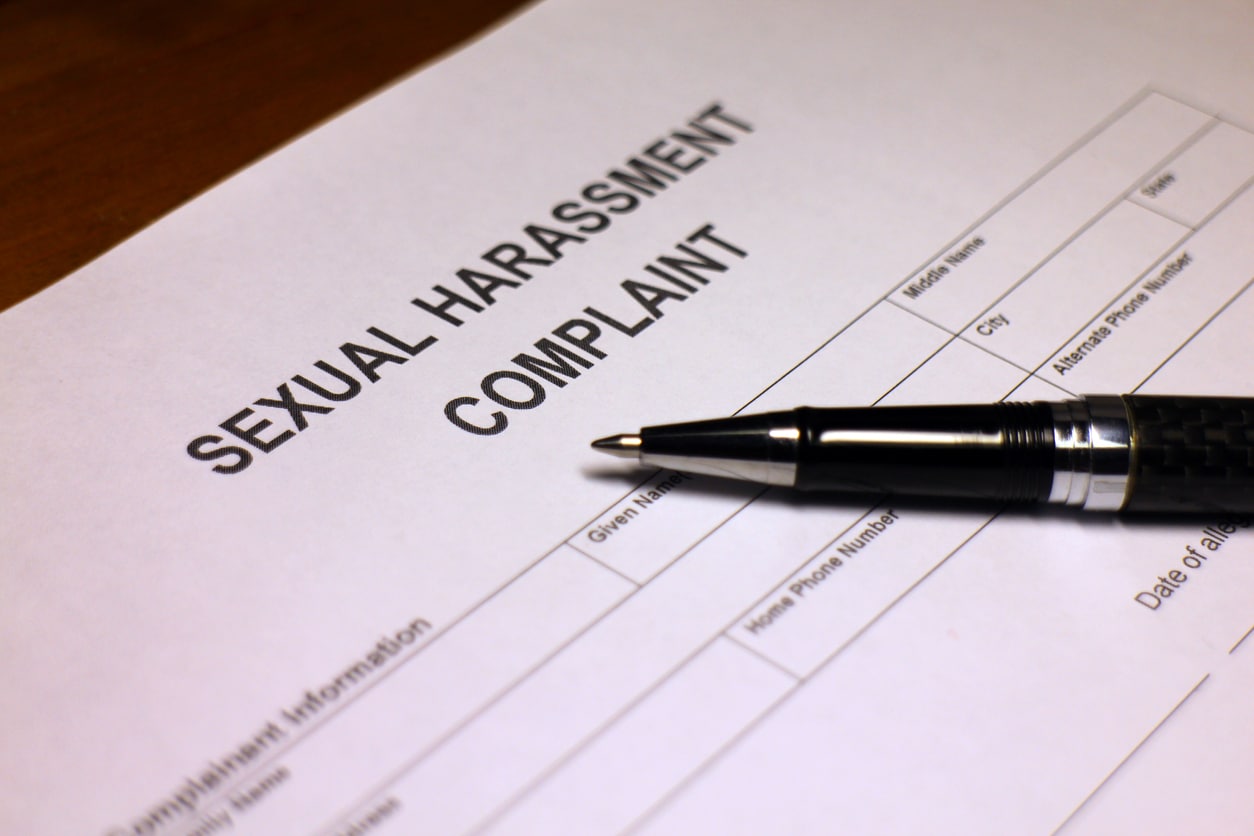EEOC Sexual Harassment Claims Drop in 2019
Every year, thousands of women and men file claims with the U.S. Equal Employment Opportunity Commission (EEOC) for discrimination and sexual harassment at work. Surprisingly, last year the number of sexual harassment claims dropped, even though there was a nationwide push for women to come forward about sexual abuse and misconduct. Find out why that may be.
EEOC Releases 2019 Enforcement and Litigation Data
The EEOC has released its data for claims filed and enforcement actions in 2019. Here’s the breakdown:
- Total Charges: 72,675
- Retaliation: 39,110 (53.8%)
- Disability: 24,238 (33.4%)
- Race: 23,976 (33%)
- Sex: 23,532 (32.4%)
- Age: 15,573 (21.4%)
- National Origin: 009 (9.6%)
- Religion: 2,725 (3.7%)
- Color: 3,415 (4.7%)
- Equal Pay Act: 1,117 (1.5%)
- Genetic Information: 209 (0.3%)
Many complaints raised more than one charge, or coupled discrimination and harassment complaints with retaliation by their employer after the discrimination was reported. These numbers do not include charges filed with state or local agencies such as the New York Human Rights Commission.
Sexual harassment and gender discrimination accounted for nearly one third of all the national discrimination complaints under Title VII of the Civil Rights Act. This reflects the ongoing struggle for women workers to be treated the same as men in the workplace.
Total Claims, Sex Discrimination Charges Show Continued Drop in Enforcement
Both the total number of charges and the sex harassment and gender discrimination claims show a trend away from filing with the EEOC. While the percentage of claims related to sex has remained steady near 30%, the total number of claims has dropped dramatically since they peaked at 30,356 in 2012. Total claim numbers show a similar trend. The 72,675 claims filed in 2019 pales in comparison to the nearly 100,000 charges in 2010, 2011, and 2012.
This reflects the EEOC’s shift in priority to reduce its caseload. Last year, EEOC Acting Chair Victoria A. Lipnic said the agency was trying to focus on “meritorious charges” and cases that “advance the public interest” rather than representing a broader range of women and minorities facing discrimination at work.
When Should You Skip Filing an EEOC Complaint?
Filing a claim with the EEOC may seem like a logical first step for your sexual harassment or gender discrimination claim. In fact, it is mandatory under most federal anti-discrimination laws. You usually cannot file a complaint in federal court until you have received a notice of right to sue from the EEOC. However, filing a complaint isn’t always the best choice for employees. You may want to skip or delay filing an EEOC complaint if:
You Work for a Very Small Company
The EEOC only has authority over employers with 15 or more employees (except in cases of Equal Pay Act violations). If you work for a very small company, you may not be able to use the EEOC or the federal statutes it enforces to get the relief you need.
You Want to Continue in Your Current Position
Retaliation is illegal under every state and federal anti-discrimination law. But the fact that 53% of all charges filed with the EEOC were for retaliation shows that it is still a real part of resolving sexual harassment and discrimination. From a practical perspective, if your goal is to keep your current position and change the culture in your workplace, the EEOC may not be your best choice. Instead, you and your gender discrimination attorney may be able to negotiate the changes you seek without burning bridges and making your employer more hostile to you and your cause.
Your Claim is Better Protected Under State Statutes
Title VII of the Civil Rights Act is the national go-to statute for sexual harassment and gender discrimination, but that doesn’t mean it is the gold standard. For some, state and local laws may apply more directly or provide better options for enforcement. This is especially true for independent contractors, vendors, and the victims of sexual orientation or gender identity discrimination. However, a claim at one office sometimes precludes filing the same claim somewhere else. Before you decide whether to go to the EEOC or the New York Human Rights Commission, be sure to talk to an experienced employment discrimination attorney so you understand the effects of that decision.
At Eisenberg & Baum, LLP, our experienced gender discrimination and sexual harassment attorneys have seen all kinds of employment discrimination cases. We know when to file a claim with the EEOC and how to make the New York State Human Rights Law work for employees who might otherwise not get the attention they deserve. Contact us to schedule a consultation at our office in New York City, or over the phone.











